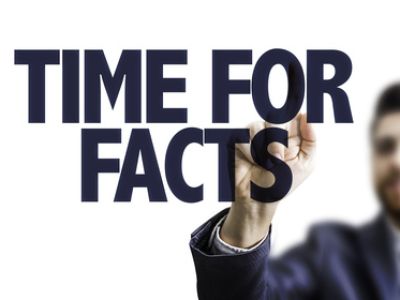Okay, so now you know why you need a press release, you know what you are going to do with it and hopefully, you also know how to plan one and ensure it’s something that people will be interested to cover in their magazines and something that readers will be keen to read through in magazine format. Now you will get informed how to write a press release.
Goals

Remember: this is a tool for the press to write an article from. Your objective is to provide the basis and an outline for a story. That means providing the facts and the actual structure of the story but it also means making sure that you aren’t too clearly biased and it means keeping things concise and easy to read.
Imagine that you’re a busy journalist. You have a bunch of stories you need to complete before a given date. And then you get what sounds like an interesting story through as a press release. How would you want this to be presented? How could that press release make your life easier and thus make you more likely to cover the story and to feel goodwill toward the company?
Remember at the same time though, that your aim here is to make sure your business comes across the way you want it to. That means you need to think about how you can portray yourself in a positive light and how you can subtly influence the outcome of the article.
If you write a post and it is very clearly an advert, then you will simply frustrate the journalists – trust me on that one. But you do still need to subtly include the things you need to include.
Writing Style
With all this in mind, you need to adopt the correct writing style. This means:
Concise and efficient
Writing has a single job, which is to communicate points and facts or perhaps emotions. In other words, your aim is to download the information from your brain into that of the reader. That is the ‘goal’ and the more quickly you can do this, the more efficiently, the better your writing is from an objective standpoint.
Think of this like investment and returns. The reader is investing in your writing through the time they’re committing to reading it. The more time they invest, the more payoff they should receive.
Meanwhile, the return is whatever they’re getting back – which should be the information that they seek and the means through which to write a great story for their paper!
If you can give the maximum amount of return with the minimal time investment, then you can consider your writing to be top quality and you will have delivered something excellent.

This might lead you to wonder what the purpose of a big vocabulary is? The answer is that using the right words or the right structure should always communicate something.
Using a bigger word is fine if it allows you to add a slightly different tone or meaning, or if it allows you to say slightly more with the same number of words. Likewise, it can help you to achieve the right tone.
Style and tone
The style and tone of your writing should be such that you sound professional and objective. That means you should write using the correct grammar and spelling and with minimal mistakes. Avoid contractions and colloquialisms, and likewise try to avoid being overly bombastic or using exclamation marks. Jokes or opinion are also not welcome here.
Even if the company is a fun and youthful business, the purpose of the press release is to provide factual information that is going to serve as a reference. If you insert your own style or jokes or opinion then this is a) stepping on the toes of the writer and b) damaging your professionalism.
Detached
Your writing should be somewhat detached. That is to say that it should be written in the third person and it should be written in a manner that at least attempts to be objective.
In other words, you are writing:
“Computer World has just announced its new line of products”
Rather than:
“We have just announced our new lines of products”
Likewise, you shouldn’t describe things as ‘amazing’. If you want to make your product or your service sound exciting, then you need to use facts and figures. That means you need to talk about how it is the first of its kind only if this is objectively true. You can write about studies, about research… in general just write about things that are proven, quantifiable and that can’t be argued.
AP Style
If you want your press release to be taken seriously and if you want your story to be covered, then you need to demonstrate that you know what you’re doing and that you are a professional organization with a story that is worth covering.

While many aspects of grammar and formatting are set in stone, others are somewhat more flexible and open to interpretation. It is up to you for instance if you use the Oxford comma. And what of capitalization? For a title or a heading, should each word start with a capital? What about ‘and’ or ‘if’? What if your title ends on the word ‘it’?
Note that the AP style is not aimed specifically at press releases but for the press in general. It is generally worth following but there are some scenarios where you may wish to reconsider for the purposes of a press release.
If you want to make sure your press release looks absolutely professional, then the AP Style book has the answers. Some basics that you may wish to commit to memory:
- Avoid wordiness, long sentences, difficult vocabulary and jargon
- Contractions allowed (but they are best avoided for press releases)
- When paraphrasing, attribute to a source at the start or end of the sentence
- When paraphrasing, using the verb ‘said’ as opposed to ‘pointed out’, or ‘explained’. These can be seen as biased.
- Always cite sources for information that is not ‘generall knowledge
- Attribution for quotes goes at the end of the quote (“CEO said”)
- For quotes that are more than one sentence, the attribution goes in between the first and second set of quotations
- AP Style does not use the Oxford comma. The comma prior to ‘and’ in a series is omitted.
- All common nouns are to be capitalized when they are part of a full name. I.e. ‘Democratic Party’ and not ‘Democratic party’.
- Words derived from proper nouns should also be capitalized – e.g. ‘Christian’ or ‘English’
- Trademarks should always be capitalized
- Avoid trademarks when speaking generally about nouns
- Titles are capitalized but only when used just before the name
- Long titles go after the name (Jeff Johns, acting vice principle)
- Capitalization for titles applies to principle words as well as propositions and conjunctions as long as they have four or more letters
- Prepositions and conjunctions with fewer than 4 letters are capitalized if they are the first or last word
- When referencing titles of books and movies, AP Style uses quotation marks and not italics
Press Release © Brian Jackson / fotolia.com
- When using abbreviations and acronyms, words are used in full for their first reference and the abbreviated form is used thereafter
- Months are abbreviated when used with a specific date (3rd Jan) but they are written in full when used alone or with a year
- State and cities are written in full. States are abbreviated when the two are used in conjunction. Well known cities (e.g. New York) do not need a state.
- Hyphens are used for prefixes that end with a vowel attached to words beginning with vowels (re-entry)
- Hyphens are also used when the following word is capitalized (ex-Beatle)
- Hyphens are used for compound modifiers preceding nouns (full-time)
- Numbers are spelled out 1-9 but are numerical for longer numbers
- Sentences should only begin with written out numbers
- Numerals are always used for ratios and for ages
- For dimensions, figures are written out (5 feet 8 inches)
- Do not use the % sign, write out the word percent
- Numerals are always used for decimal points
- When writing about money, numerals are used for exact figures and for amounts less than one dollar
- Apostrophes with ‘s’ are used for possession with regards to singular common nouns unless the next word starts with s. So ‘the waitress’s bread’ or ‘the waitress’ sugar’.
- However, for names, only the apostrophe is used
- Toward not towards
- OK not okay
What to Include
The style and the format will go a long way to making your press release seem professional and ensuring that it will get received in the right way, you also need to ensure that all the necessary information is present and correct. Here are some things to consider:
The Story
he first thing to ensure you get across is the story. That means that you need to make sure that the reader knows what your text is about and whether it is something that they would like to cover. This is normally done right away in the headline and reiterated immediately in the first opening paragraph.
For instance:
“APPLE TO RELEASE NEW iPHONE NAMED iPHONE 13 SEPTEMBER 2020 WITH HOLOGRAPHIC DISPLAY
“Apple has announced that it will be launching its next flagship mobile device this September. The device will be the first of its kind to feature a fully holographic 3D display based on AMOLED technology.”
As you can see, the story is front and center and in seconds, the reader knows the key information and can make a decision on whether or not to cover it. This might not come naturally to you if you’re used to writing blog posts or sales scripts. Perhaps your natural inclination is to start with a lengthy introduction, or to try and ‘grab attention’ with a narrative structure, a rhetorical sentence or something similar.
Detail

Quotes
Quotes can be very useful for a journalist or writer because they help to demonstrate that the story has come directly from the source.
In other words, if you write about the release of a new phone, then you could just be some blogger who read it on another website. But if you directly quote the CEO via a press release, then it becomes apparent that you have had direct contact with the company in question and it adds credence to what you’re saying.
From our perspective as the company, this increases the likelihood of the story getting covered because it will look and sound more authentic. At the same time though, it also gives us a chance to put something in our own words and to be a little less objective. This is a quote, it should be kept in tact, and thus the writers reporting on our story will need to share our viewpoint!
Facts, Stats, Dates
Facts, stats, dates and more will all be important aspects to cover. Again, the objective is to ensure that your writer can write this story without the need for doing any additional research. So, if you’re announcing a new smartphone, then you need to include the size, the weight, the processor speed, the resolution, the RAM, the battery size, the GPU etc. etc.
The risk here is that your content can end up getting a little on the large size and this is a problem. Generally, a press release will be around 400-500 words long, and so you should avoid packing in too much additional content.
The solution? If you are sending out a press release, then you can also include an additional ‘fact sheet’. This also has the benefit of being a useful reference that a journalist can check over as they’re writing to ensure all their information is accurate.
Images / Multimedia
Images and multimedia are also important to include. Most articles are going to be accompanied by an image and so you need to provide the writers with some shots they can use. Even if they don’t end up running the images alongside the content, this can be useful simply to quickly let the writer know what your product looks like, what the event looked like etc. It can help to set a tone and also subtly convey the kind of impression that you want your audience to have of your business.
And while you are at it, you can also include video or other forms of media. Video is especially useful for news coverage or YouTube coverage.
Background

This will be touched on lightly in the content as we discussed, but it can also be included as an additional sheet to avoid bulking up the content too much. This is what we called a ‘backgrounder’ – an additional insert providing the necessary background information for the topic that is being covered.
Formulating a Press Kit
So not all of your information is going to be fitted neatly into your press release. As well as the release itself, you’ll also be aiming to include information through your backgrounder and your fact sheet. Then there will be the images and the multimedia. Together, this gives you what is known as a ‘press kit’. In short, this is a selection of documents or files that can be sent digitally or via snail mail and that will supply the writers and the press with all the information they need to write the full story.
To recap, that means:
• Press release
• Backgrounder
• Fact sheet
• Media
You can choose which of these are relevant for your particular story and which aspects to leave out.
